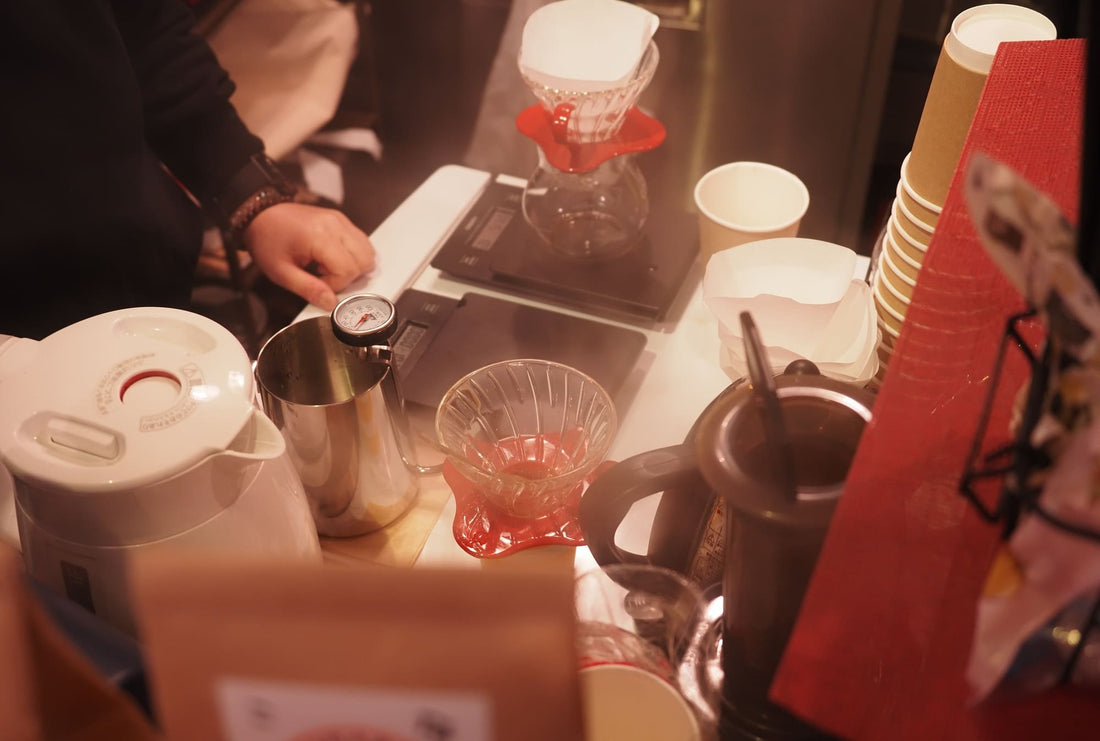Reading material
Coffee Thermometer: Find the Ideal Brewing Temperature

When it comes to brewing delicious coffee, we tend to focus on the freshness of the beans and the grind, but in fact, the temperature of the water is also an important factor.
A difference of just a few degrees can significantly change the flavor, aroma, and mouthfeel. This is where a thermometer comes in handy. Knowing the exact temperature makes it easier to control the taste.
In this article, we will introduce practical points, from the basics of temperature control to how to use a thermometer .
Temperature changes the taste of coffee

The ingredients extracted vary depending on the temperature of the water, resulting in different flavors.
In this way, temperature is an important control factor that influences the direction of the flavor.
Temperature guidelines for different roast levels
The optimum extraction temperature varies depending on the roast level. The following is just a guideline.
|
Roast degree |
Temperature guideline |
Features |
|
Light roast (light to city) |
90-92℃ |
Brings out bright acidity and gorgeous aroma |
|
Medium roast (medium to full city) |
88-90℃ |
A well-balanced acidity and sweetness for a rounded taste |
|
Dark roast (French to Italian) |
85-88℃ |
Softens bitterness and richness for a mellow aftertaste |
Ideally, use this temperature range as a guide and adjust it to suit your taste.
The flavor changes as it cools

Freshly brewed coffee is piping hot, but as time passes, the temperature and the impression it gives will change.
One of the charms of coffee is enjoying the changing flavors within a cup.
Iced coffee extraction and temperature adjustment

Instead of simply cooling hot coffee, you can adjust the flavor of iced coffee by adjusting the initial extraction temperature.
The "low temperature" mentioned here refers to extraction using hot water, which is different from cold brew coffee.
→ Even when cooled quickly with ice, the aroma and richness remain.
→ Bitterness is reduced, resulting in a light and refreshing taste
Even with the same beans, the final result can vary greatly depending on the temperature , so try different temperatures to suit your tastes and the occasion.
Benefits of using a thermometer
The benefits of using a thermometer include:
- Increased taste reproducibility : You can recreate your favorite cup of coffee numerically
- Easy to adjust to the characteristics of the beans : Higher for light roasts and lower for dark roasts.
- Fewer mistakes: Prevents flavor variations such as being too bitter or too weak
The major advantage is that you can get "consistently delicious" food.
Types of thermometers and how to choose them
There are several types of thermometers.
It's best to choose one that suits your lifestyle and the level of accuracy you require.
Tips you can use even without a thermometer
Even if you don't have a thermometer, you can control the extraction temperature using the following methods.
Summary | Enjoying coffee with different temperatures
Coffee is a drink that takes on a completely different character depending on the temperature.
Using a thermometer will allow you to more accurately reproduce these differences, making it easier to create the cup that suits your taste.
To make your daily coffee experience even more enjoyable, why not pay attention to temperature control?